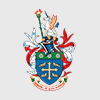Ipswich, Willesden and Walsingham - Three Marian Shrines in Sixteenth Century England
Everyone likes a mystery. In this research seminar, Tim Guile (Chair of the English Catholic History Association) is going to relate events that have elements of a good detective story: statues revered for centuries, royal agents bent on the destruction of images, traditionalists trying to preserve sacred objects for future generations and persistent pious legends of true images which one day might be revealed and a devotion revived in the land of ‘Our Lady’s Dowry’. And of course, like any good detective story, heroes and villains. At the Reformation in England in the 1530s there was an orgy of destruction of images of saints, holy objects, crucifixes and crosses. Evangelical reformist bishops such as Latimer and Ridley led the way and others followed. Thomas Cromwell, chief minister to Henry VIII, ordered the plundering of shrines and monastic institutions including hospices and hospitals. Pilgrimages, hitherto, a way of life for ordinary Christians, were banned and the holy places despoiled.
But what happened to the relics, statues and images from these shrines and churches? Did some survive the smashing, looting and burning? Were some of the altars, relics and sacred objects hidden in the hope of better days to come when a future monarch would again look favourably upon his or her Catholic subjects? What if some had survived, hidden away or sent abroad for safe keeping?
To find out more, please join Tim Guile on 15th November for the second of a new series of online research seminars organised by the Centre for Marian Studies at St Mary’s University. Register for the free Zoom link by sending an email to info@marianstudies.ac.uk.
